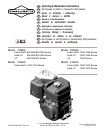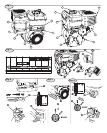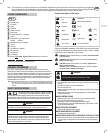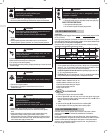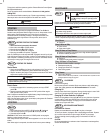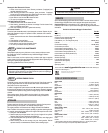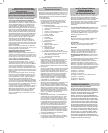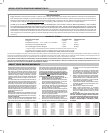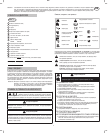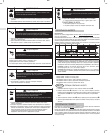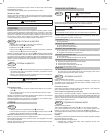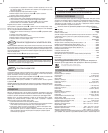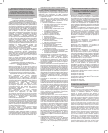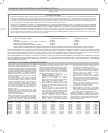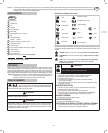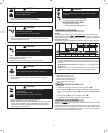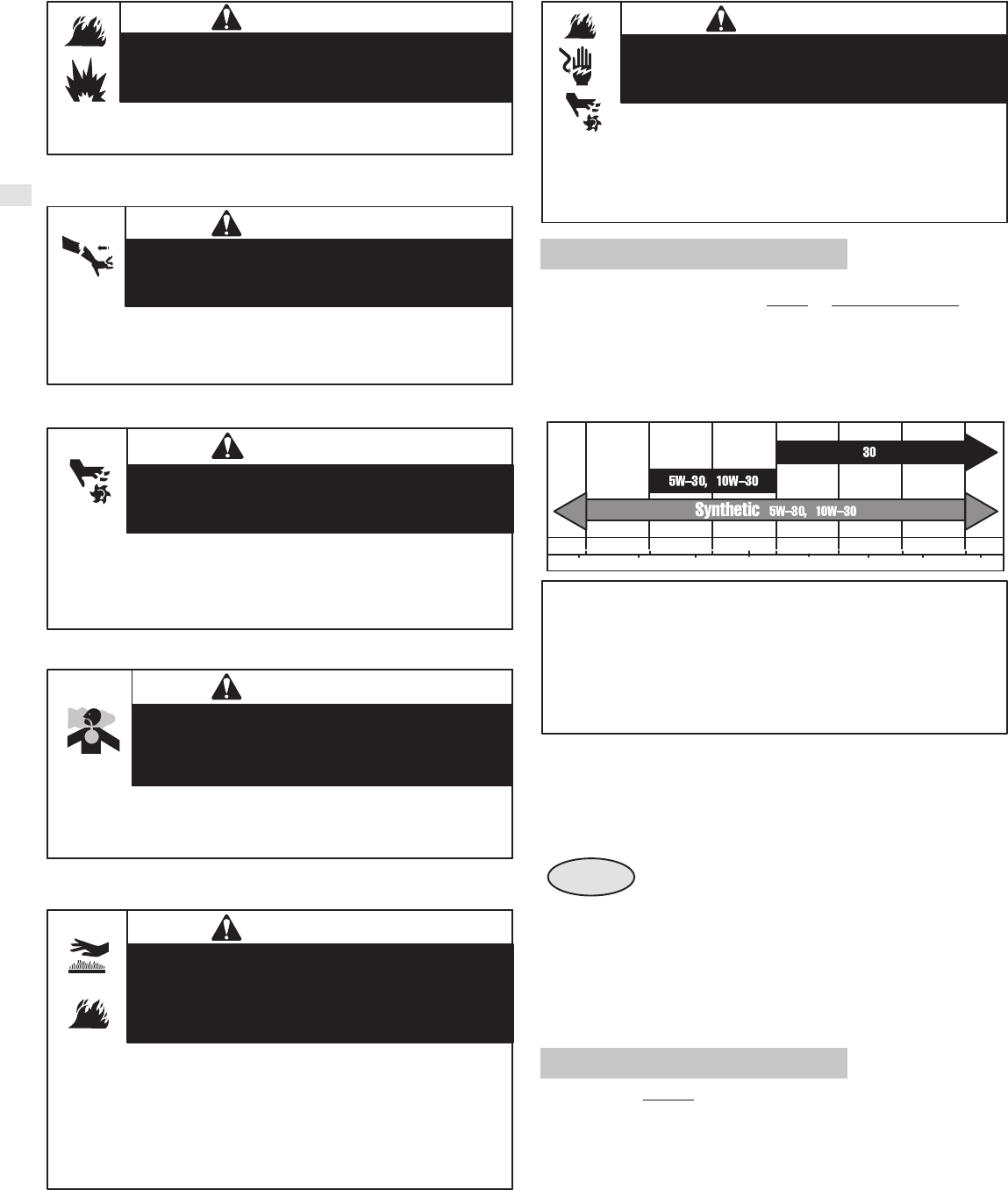
GB
2
Starting engine creates sparking.
Sparking can ignite nearby flammable gases.
Explosion and fire could result.
• If there is natural or LP gas leakage in area, do not start engine.
• Do not use pressurized starting fluids because vapors are flammable.
WARNING
Rapid retraction of starter cord (kickback) will pull hand and arm
toward engine faster than you can let go.
Broken bones, fractures, bruises or sprains could result.
• When starting engine, pull cord slowly until resistance is felt, then pull
rapidly.
• Direct coupled equipment components such as, but not limited to,
blades, impellors, pulleys, sprockets, etc., must be securely attached.
WARNING
Rotating parts can contact or entangle hands, feet, hair,
clothing, or accessories.
Traumatic amputation or severe laceration can result.
• Operate equipment with guards in place.
• Keep hands and feet away from rotating parts.
• Tie up long hair and remove jewelry.
• Do not wear loose-fitting clothing, dangling drawstrings or items that could
become caught.
WARNING
Engines give off carbon monoxide, an odorless, colorless,
poison gas.
Breathing carbon monoxide can cause nausea, fainting or
death.
• Start and run engine outdoors.
• Do not start or run engine in enclosed area, even if doors or
windows are open.
WARNING
• Allow muffler, engine cylinder and fins to cool before touching.
• Remove accumulated combustibles from muffler area and cylinder
area.
• Install and maintain in working order a spark arrester before using
equipment on forest-covered, grass-covered, brush-covered
unimproved land. The state of California requires this (Section 4442 of
the California Public Resources Code). Other states may have similar
laws. Federal laws apply on federal land.
WARNING
Running engines produce heat. Engine parts, especially muffler,
become extremely hot.
Severe thermal burns can occur on contact.
Combustible debris, such as leaves, grass, brush, etc. can catch
fire.
Unintentional sparking can result in fire or electric shock.
Unintentional start-up can result in entanglement, traumatic
amputation, or laceration.
BEFORE PERFORMING ADJUSTMENTS OR REPAIRS
• Disconnect spark plug wire and keep it away from spark plug.
WHEN TESTING FOR SPARK
• Use approved spark plug tester.
• Do not check for spark with spark plug removed.
WARNING
OIL RECOMMENDATIONS
CAUTION:
Engine shipped from Briggs & Stratton without
oil. Before starting engine, fill with
oil. Do not over-fill.
Use a high quality detergent oil classified For Service SF, SG, SH, SJ" or higher
such as Briggs & Stratton 30, Part Number 100005. Use no special additives with
recommended oils. Do not mix oil with gasoline.
Choose the SAE viscosity grade of oil from this chart that matches the starting
temperature anticipated before the next oil change.
°C -30
°F
-20 0
20 40 60 80 100
-20 -10 0 10 20 30 40
*
**
32
CAUTION: Air cooled engines run hotter than automotive engines. The use
of non-synthetic multi-viscosity oils (5W-30, 10W-30, etc.) in temperatures
above 40° F (4° C) will result in higher than normal oil consumption. When
using a multi-viscosity oil, check oil level more frequently.
* CAUTION: Synthetic oil must be used when operating engine under 40° F
(4° C) or engine damage will occur.
** CAUTION: SAE 30 oil, if used below 50° F (10° C), will result in hard starting
and possible engine bore damage due to inadequate lubrication.
Oil Capacity
• Models 120000 / 150000 is 0.6 lt (21 oz).
• Models 200000 / 210000 is 0.8 lt (28 oz).
• Check oil level before starting the engine.
• Check oil level before every use.
• Keep oil level at FULL.
Fig. 2 OIL PROCEDURE
1. Place engine level and clean around oil fill Ê.
2. Remove dipstick
Ë, wipe with clean cloth, insert and tighten down again.
Remove dipstick and check oil level. Oil should be at FULL mark
Ì. If oil is
required, add slowly. Do not over fill.
−OR−
3. Remove oil filler plug
Í. Oil should be full to overflowing Î.
4. Tighten dipstick or oil filler plug firmly before starting engine.
FUEL RECOMMENDATIONS
Use clean, fresh, lead-free gasoline with a minimum of 85 octane. Leaded
gasoline may be used if it is commercially available and if unleaded is
unavailable.
In U.S.A. leaded gasoline may not be used. Some fuels, called oxygenated or
reformulated gasolines, are gasolines blended with alcohols or ethers. Excessive
amounts of these blends can damage the fuel system or cause performance
problems. If any undesirable operating symptoms occur, use gasoline with a
lower percentage of alcohol or ether.



